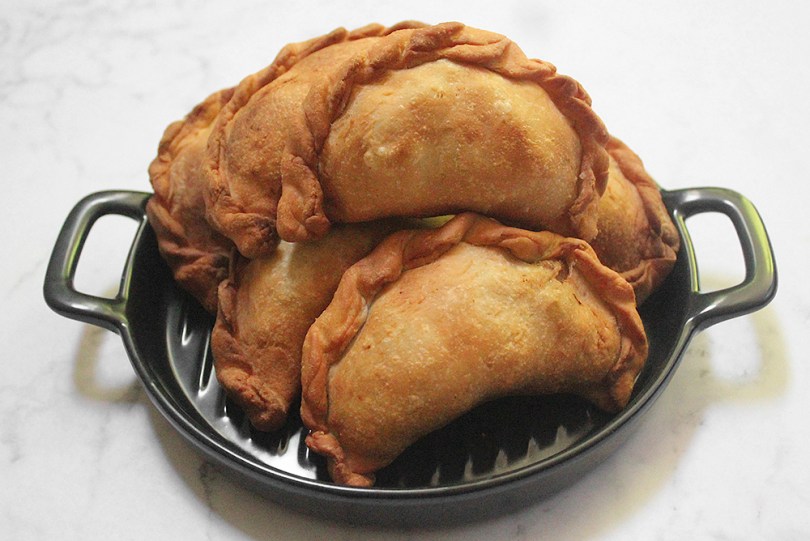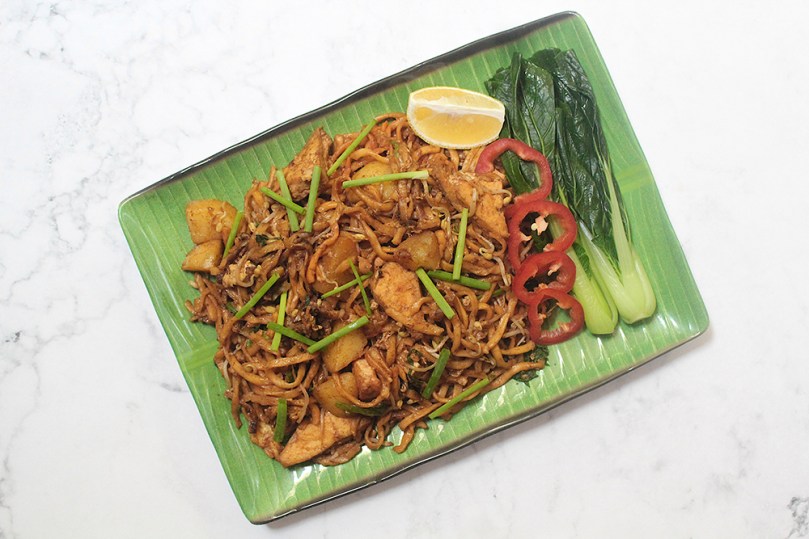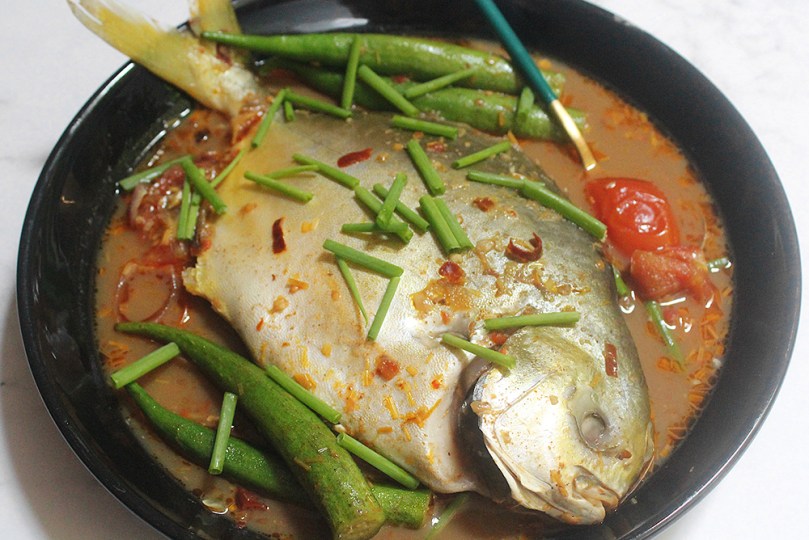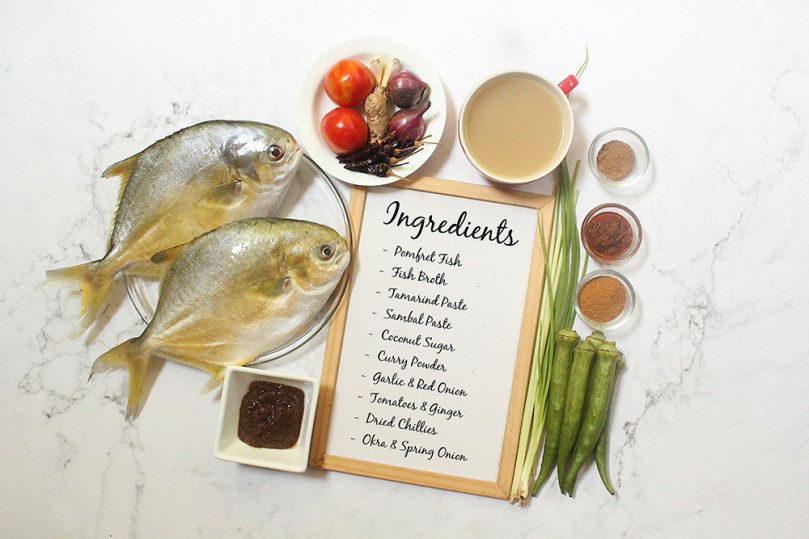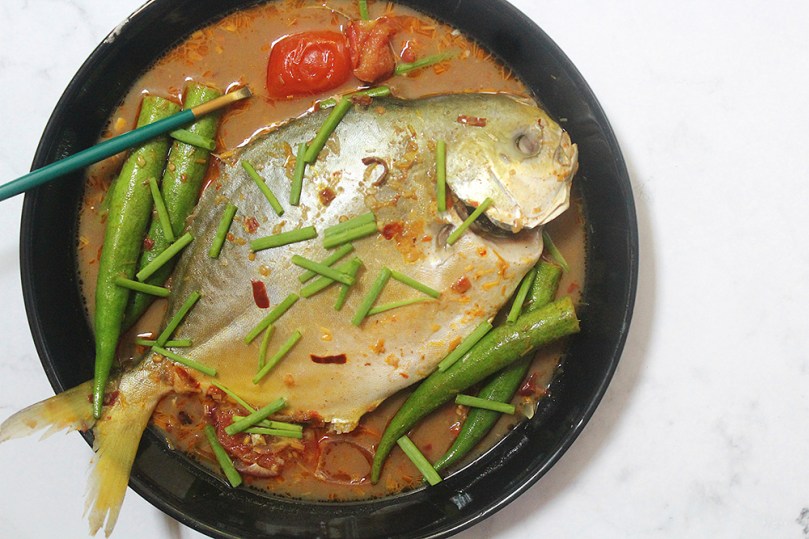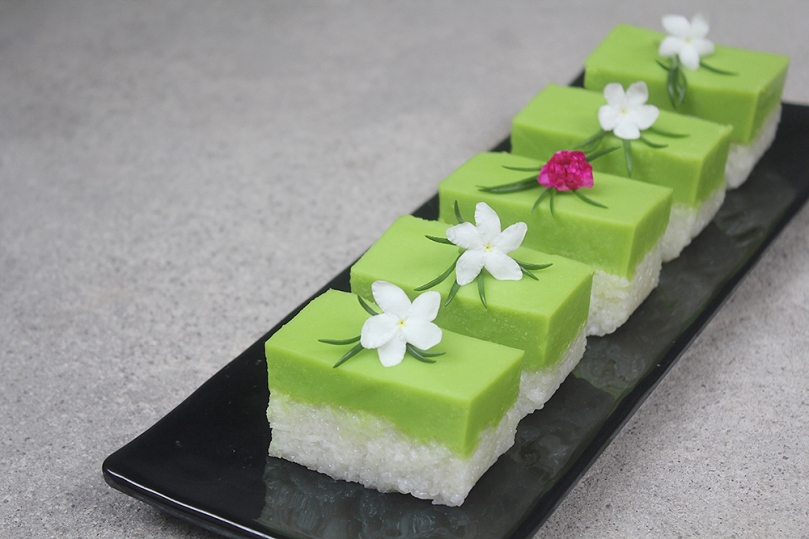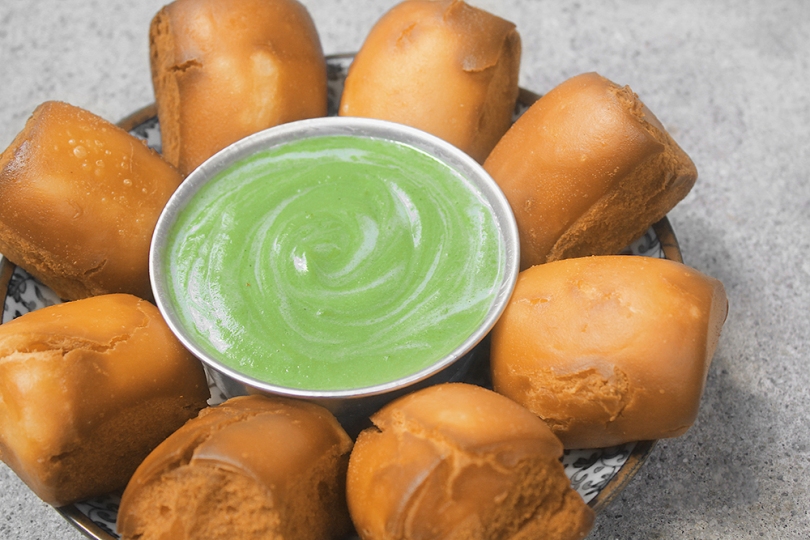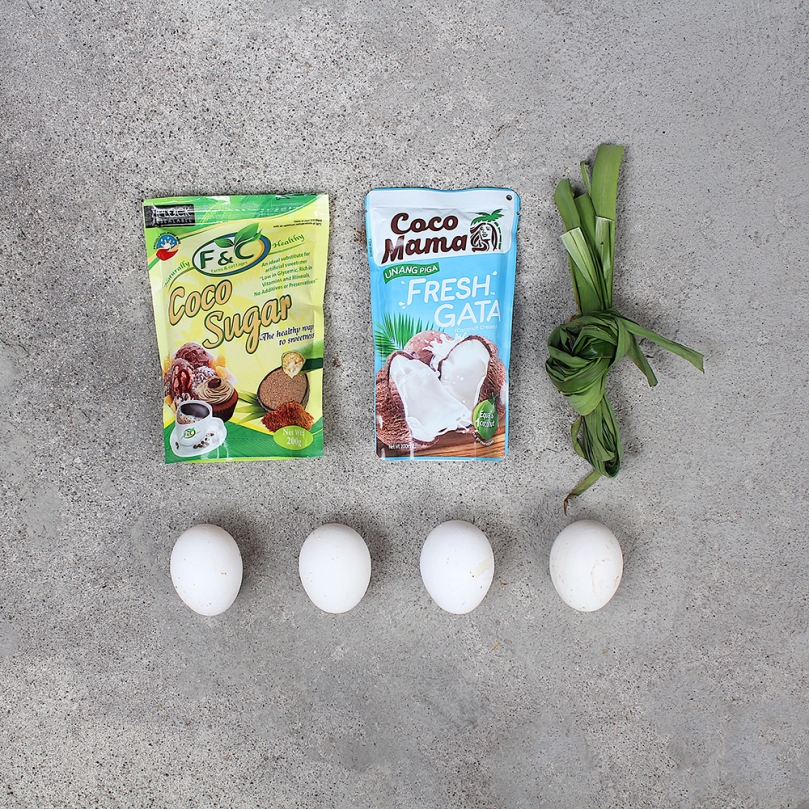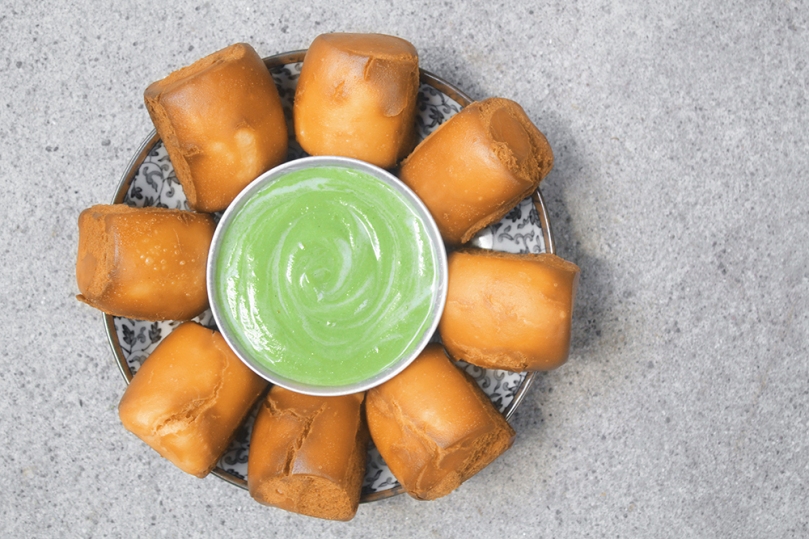Hello Everyone! Before I proceed to tonight’s post and back to regular programming on Amcarmen’s Kitchen, I would just like to say a very special thank you to this year’s batch of Auguesters for sharing their creative and innovative takes on Southeast Asian cuisine. I know it’s already September, but I still have one more guest to feature when I get all the materials from them.
Pressing on, before we fly off into another country on our Flavours of Southeast Asia journey, I’ll be picking up from where I left off back in July when we were roaming around Malaysia. I had made these back then, but life got in the way as things started to get hectic at work. I didn’t want this to go in my archive bank and so I’m sharing this now.
I remember being obsessed with these curry puffs at one point in my life. It was a couple of years ago when I was still working in Brunei. Someone from the office would always bring a box of Old Klang Road curry puffs for everyone in our department to share. Shamelessly, I would always help myself to two or three of them in one go. I always thought that these curry puffs originated from Malaysia, but apparently they were local to Brunei. The man behind these curry puffs named his shop after a lane known as Old Klang Road which he really liked from his travels to Malaysia. Soon after, he wanted the locals to know that his curry puffs were Brunei made and rebranded his shop as ‘The Curry Puff Factory’.

Nonetheless, the recipe that I will be sharing is for a Malaysian-style curry puff. In Malaysia, curry puffs are commonly known as Karipap and sold freshly fried at many Malay, Chinese, and Indian food stalls and even at trendy cafés. These curry puffs are filled with potatoes, onions, and other vegetables such as green peas, carrots, and corn. The sauce/gravy has to be thick in consistency. This is to prevent it from oozing out of the puffs and potentially burning your tongue and lips when biting into a piping hot curry puff.
Boiled eggs and chicken are also usually added for extra protein, and you can also find curry puffs with sardines in it too, but to keep this recipe vegetarian/vegan-friendly, I omitted the meat and used more potatoes instead.
Also, just a little disclaimer, this is the first time I’ve made curry puffs from scratch, so please excuse the terrible folds *cheeky grin*

PREP TIME 45 MINS | COOKING TIME 30 MINS | MAKES 20 PUFFS*
*Depending on the size of the curry puffs
INGREDIENTS
For the dough
- 2 cups all purpose flour
- 1/2 tsp salt
- 113g margarine
- 1/2 cup cold water
For the filling
- 500g potatoes, cut into small cubes
- 1 large brown onion, diced
- 100g frozen mixed vegetables
- 1 tbsp cooking oil
- 2 tbsp curry powder
- 1 tbsp chilli powder
- 1/4 cup water (or vegetable broth)
- Salt and black pepper, to taste
- 1/4 tsp sugar
- 2 tbsp all purpose flour
- Oil, for deep frying
METHOD
- Filling: Heat oil in a large pan over medium-high. Sauté the onions until cooked through, about 3 to 4 minutes. Add the potatoes, followed by the mixed vegetables, curry powder, and chili powder. Season with salt and freshly cracked black pepper, to taste, and add the sugar. Continue to cook for about 5 minutes.
- Add the water (or vegetable broth) and the cover. Let it simmer on medium heat for about 5 minutes or until the potatoes are tender.
- Uncover and continue to cook the potato mixture until the liquid has mostly evaporated.
- Sprinkle the all purpose flour into the potato mixture and then continue to cook until the mixture ‘glues’ together. Taste and adjust the seasoning as needed.
- Remove from the heat and set aside to let it cool down completely before wrapping.
- Dough: In a large mixing bowl, combine the all purpose flour, salt, and margarine, mixing with a spatula until just combined. Slowly incorporate the water a little at a time and knead to form a soft, non-sticky dough (you may not need the full 1/2 cup of water).
- Tip the dough onto a clean work surface and continue to knead for about 3 to 4 minutes until smooth. Form the dough into a ball and place it back into the bowl. Set aside, covered with a kitchen towel to allow it to rest, about 15 minutes.
- Tip the rested dough onto your clean, lightly floured work surface, and roll into a log. Cut the dough into 20 equal portions. Keep them covered and work with one dough at a time.
- Curry Puffs: Flatten a portion of the dough with the palm of your hands and then use a rolling pin to roll it out into a circle that is about 5 to 6 inches in diameter.
- Place one portion (about a tablespoon) of the potato filling in the middle of the dough.
- Fold the dough into half to create a half circle and seal the edge by pinching and folding down. You can watch my TikTok video on how I did this (terribly).
- Repeat with the rest of the dough and filling to make 20 curry puffs.
- In a large frying pan, add enough oil for deep frying over medium heat. Fry the curry puffs in small batches until they are golden brown in colour.
- Remove from the oil and transfer to a cooling rack lined with a paper towel to absorb any excess oil. You can also keep them warm in the oven at 90C (or 200F) if you like. The fried curry puffs stay crispy for hours at room temperature too!
- Serve immediately while hot, and enjoy!
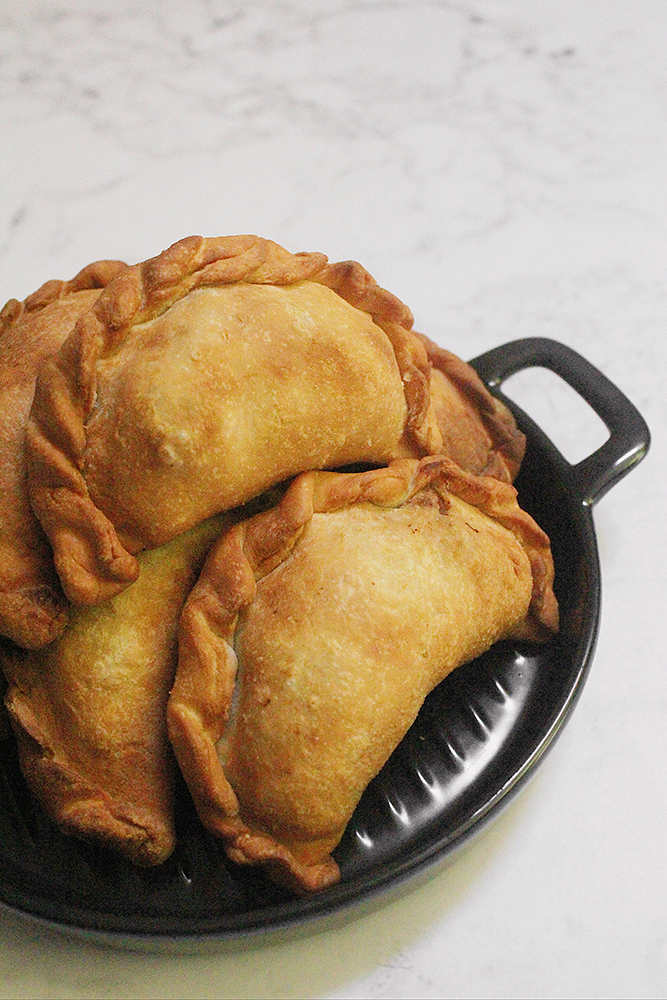
Notes:
- If you don’t want to fry a whole batch at one go, you can also keep them in the freezer and fry them in the succeeding days. You do not have to thaw them prior. You’ll just have to fry them for longer since it’s frozen. Control the heat so the outside won’t burn while the filling is still cold.
- If you have some leftover filling, you can keep them in the fridge for 3-5 days. Either make more dough or make a potato curry out of them by adding some veggie stock to it. That’s what I did and then served it as a side with some crispy and flaky paratha for breakfast the next day!
BON APPÉTIT
– Ally xx

